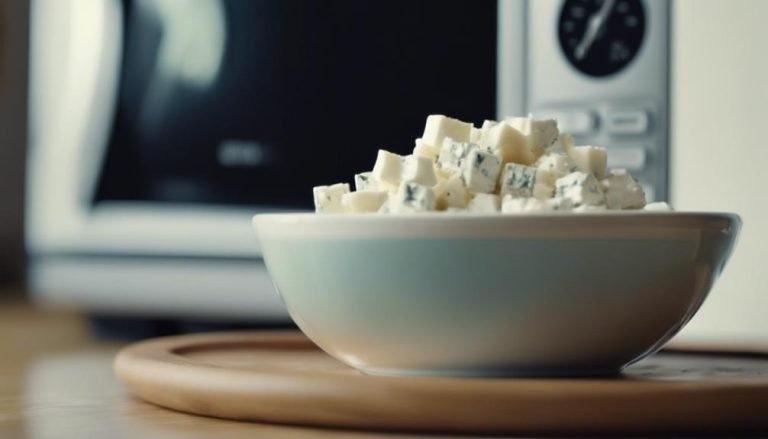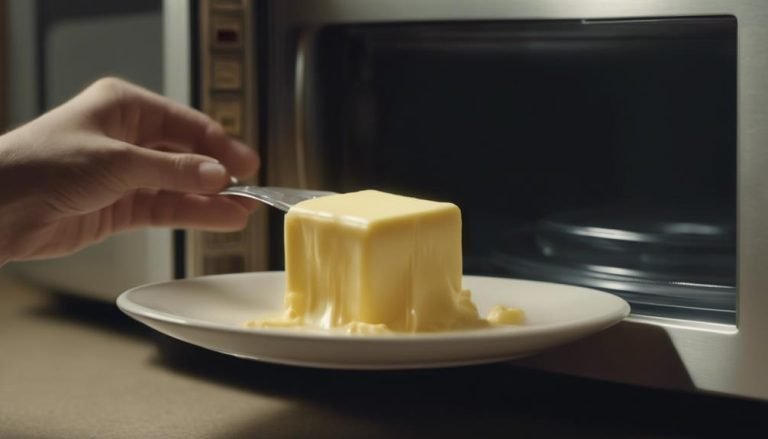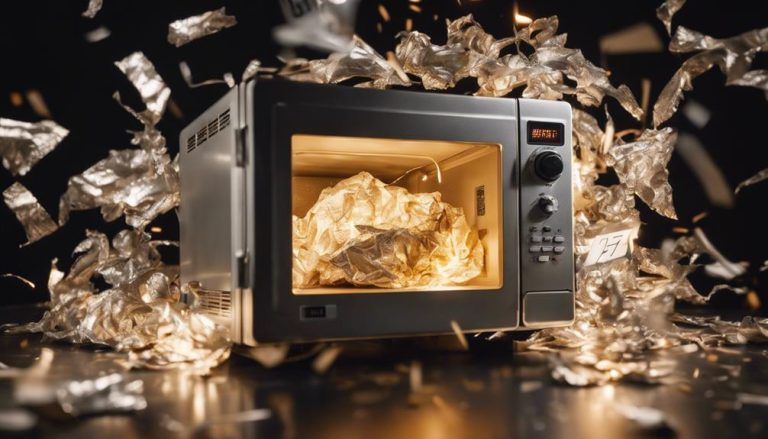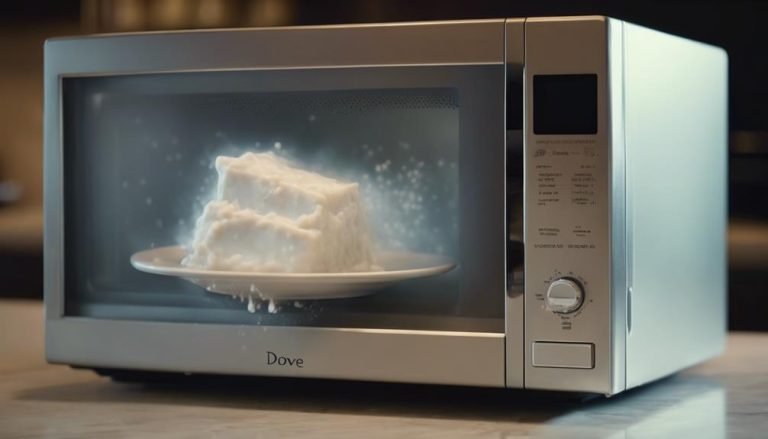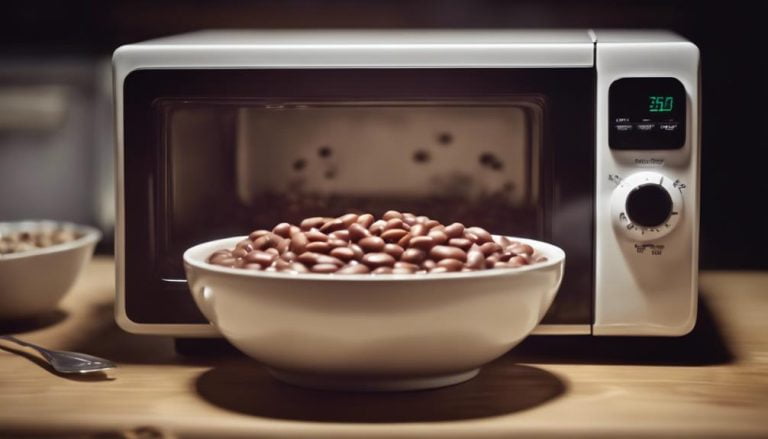Can You Microwave Coleslaw
Yes, you can microwave coleslaw, but it may alter the traditional flavors and texture. Microwaving coleslaw can soften the cabbage and other vegetables, resulting in a less crunchy texture. The heat from the microwave can also cause the dressing to become watery.
However, if you prefer a softer and slightly warmer coleslaw, microwaving can be a convenient option. Just keep in mind that it may not have the same crispness and freshness as traditionally prepared coleslaw.
Key Takeaways
- Microwaving coleslaw efficiently softens cabbage and enhances flavors.
- Using proper techniques preserves crunchiness and freshness.
- Quick and safe microwave methods maintain texture and moisture levels.
- Enjoy convenient, time-saving coleslaw preparation with retained nutrients and flavors.
Benefits of Microwaving Coleslaw
Microwaving coleslaw offers significant advantages in terms of efficiency and flavor preservation compared to traditional preparation methods. One key benefit is the ability to release excess moisture quickly from the cabbage, ensuring that the slaw maintains its desired crunchiness.
Unlike methods that involve salting and draining, microwaving allows for immediate mixing with dressing right after the vegetables are cooked. This not only saves time but also helps in retaining the freshness and texture of the ingredients.
Steps to Microwave Coleslaw
When microwaving coleslaw, it is crucial to follow specific steps to achieve the best results.
These steps include:
- Properly preparing the cabbage
- Microwaving it until it wilts
- Removing excess water before adding other ingredients
Microwave Coleslaw Safety
To ensure safe and effective microwaving of coleslaw, it is recommended to select microwave-safe ceramics, glass dishes, or designated plastics like Tupperware for heating purposes. When microwaving coleslaw, the container used should be able to withstand the heat and prevent any harmful chemicals from releasing into the food. It is important to note that single-use plastics may not be suitable for reheating coleslaw in the microwave. Additionally, avoid using Styrofoam or take-out containers for heating coleslaw. Always have serving utensils ready to handle hot contents, particularly if the coleslaw contains dressing or mayonnaise. If the coleslaw has not been made from scratch, make sure to remove any packaging before microwaving.
| Safe Containers for Microwaving Coleslaw | Unsafe Containers for Microwaving Coleslaw |
|---|---|
| Microwave-safe ceramics | Single-use plastics |
| Glass dishes | Styrofoam containers |
| Designated plastics like Tupperware | Take-out containers |
Microwaving Coleslaw Tips
For optimal results when preparing coleslaw in the microwave, start by combining shredded cabbage with sugar and salt before heating.
To ensure your microwaved coleslaw turns out delicious and well-seasoned, follow these essential tips:
- Salting the Cabbage: Toss the shredded cabbage with sugar and salt before microwaving to enhance the flavors and draw out excess moisture.
- Microwaving Process: Microwave the cabbage covered until it begins to wilt, ensuring it is cooked evenly and retains its crunch.
- Draining Excess Water: Allow the microwaved cabbage to cool slightly and then squeeze out any excess water, preventing your coleslaw from becoming soggy.
Quick Coleslaw Reheating
To seamlessly transition from optimizing the flavor of microwaved coleslaw to effectively reheating it, a key aspect is the method used to revive the dish quickly and maintain its original crispness.
When reheating coleslaw in the microwave, start by tossing shredded cabbage with sugar and salt to facilitate efficient water removal. Microwave the cabbage until it begins to wilt, usually for a few minutes.
After microwaving, allow the cabbage to cool slightly, then squeeze out any excess water to retain its flavor. Transfer the cabbage to a clean bowl and incorporate the remaining coleslaw ingredients.
This quick reheating method ensures that the cabbage maintains its crispness and prevents it from becoming too soft, preserving the overall texture of the dish.
Factors Affecting Coleslaw Texture
Enhancing the texture of coleslaw is a crucial element in elevating the overall culinary experience associated with this popular dish. When considering factors that affect coleslaw texture, the use of a microwave plays a significant role. Here are three key points to keep in mind:
- Microwaving Cabbage: Utilizing a microwave to soften the cabbage can make it easier to chew and enjoy in coleslaw.
- Pleasant Mouthfeel: Softened cabbage ensures a pleasant mouthfeel, preventing it from being too tough to eat.
- Improved Eating Experience: Enhancing the texture of coleslaw through microwaving maintains its crunchiness while making it more palatable, ultimately contributing to a better overall dining experience.
Tips for Microwaving Coleslaw
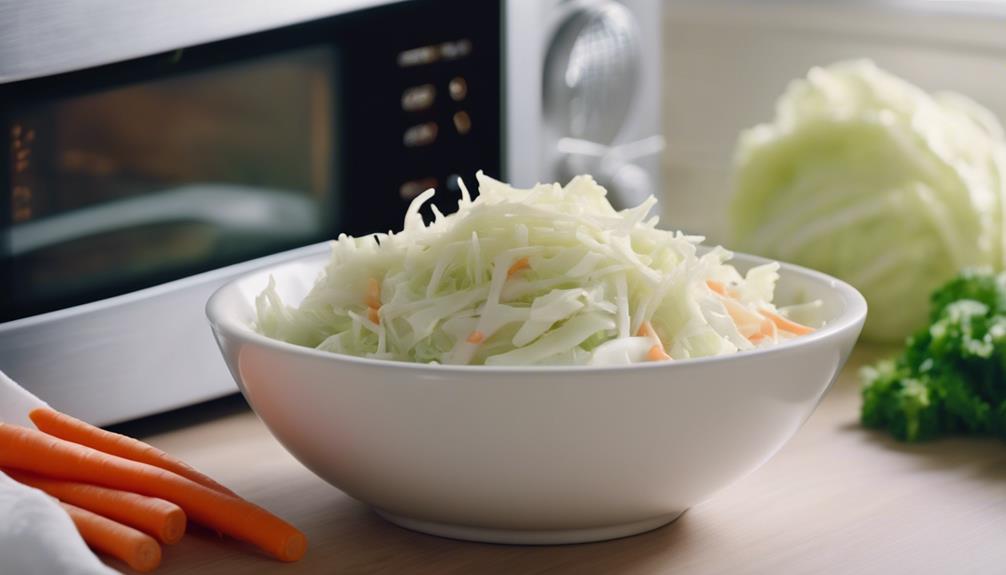
When microwaving coleslaw, utilizing the best microwave settings can ensure optimal results. Quick reheating methods help maintain the coleslaw's texture and flavors.
Additionally, it's crucial to avoid ending up with soggy coleslaw by following these tips carefully.
Best Microwave Settings
For optimal results when microwaving coleslaw, it is recommended to utilize a microwave-safe plate or dish. Here are some best microwave settings tips for heating coleslaw effectively:
- Avoid covering the plate: Prevent steam buildup by leaving the dish uncovered during heating.
- Start with short intervals: Begin with brief bursts of 15 seconds to gradually warm the coleslaw.
- Test carefully: Check the warmth of the coleslaw after each interval to prevent overcooking.
These settings will help maintain the desired texture of the raw cabbage and ensure that your coleslaw is heated evenly without becoming too soft. Use your microwave wisely to enjoy a deliciously warm coleslaw.
Quick Reheating Methods
To efficiently reheat coleslaw in the microwave, consider utilizing a microwave-safe dish and starting with short intervals for optimal results. Choose microwave-safe ceramics, glass dishes, or designated plastics like Tupperware for reheating. Single-use plastics are fine for serving but not suitable for microwave reheating. Avoid Styrofoam and take-out containers when reheating coleslaw.
Have serving utensils on hand to handle hot contents, especially if the coleslaw contains dressing or mayonnaise. Begin by microwaving for 15-second intervals and test carefully for the desired warmth, adjusting based on the amount of coleslaw being reheated. This method helps to warm the coleslaw evenly and allows the flavors of the cabbage to release.
Start Microwaving.
Avoiding Soggy Coleslaw
How can you ensure your microwaved coleslaw maintains its crisp texture and vibrant flavors? Microwaving coleslaw with sugar and salt efficiently removes excess moisture, preventing sogginess by maintaining the cabbage's crunchiness when mixed with dressing. To further avoid sogginess, consider these tips:
- Cool the microwaved cabbage: Allowing the cabbage to cool for about five minutes before mixing it with other ingredients can help retain its texture.
- Chill the coleslaw post-dressing: After preparing the coleslaw, chilling it enhances flavors and texture while preventing sogginess.
- Avoid letting cabbage sit for hours: Microwaving is a quick method to soften cabbage without losing its crunch, unlike leaving it out for hours, which can result in sogginess.
Best Practices for Reheating Coleslaw
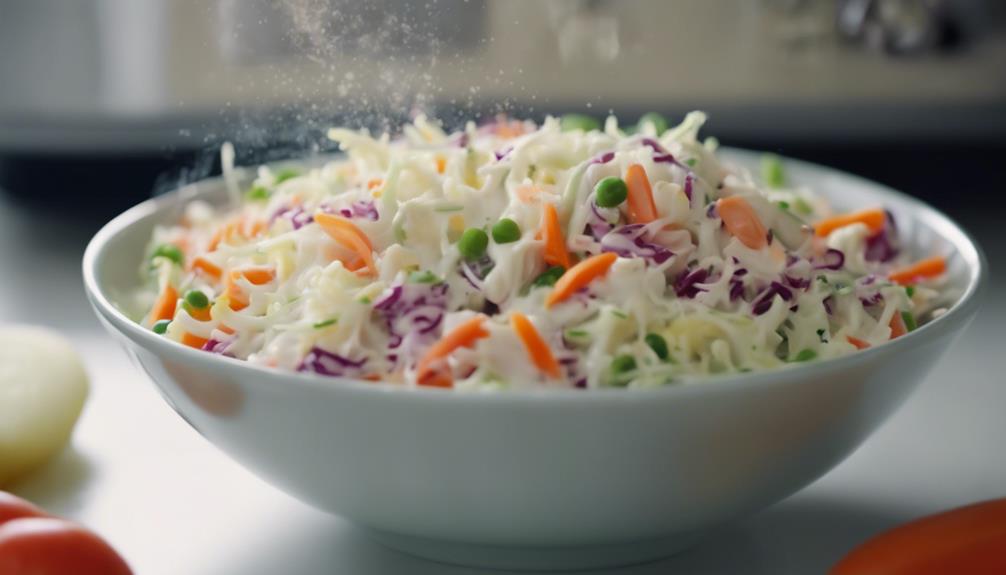
When reheating coleslaw, it is essential to utilize microwave-safe containers such as ceramics or glass to maintain the dish's quality and safety. By using these containers, you can avoid potentially harmful chemicals from leaching into your food.
When reheating, it is crucial to heat the coleslaw in short intervals, starting with 15 seconds, to prevent overcooking. This method helps maintain the texture of the cabbage, preventing it from becoming mushy or losing its crunch.
Properly storing leftover coleslaw in the refrigerator also plays a significant role in maintaining its freshness and safety. Avoid reheating coleslaw in Styrofoam or take-out containers, as they may not be microwave-safe and can affect the taste and quality of the dish.
Microwaving Vs. Traditional Coleslaw Prep
Discussing the efficiency and time-saving benefits of microwaving coleslaw compared to traditional preparation methods sheds light on the modern approach to achieving a flavorful dish with optimal texture. When considering microwaving vs. traditional coleslaw prep, a few key points stand out:
- Time-Saving: Microwaving coleslaw takes mere minutes, while traditional methods involve hours of salting and draining.
- Sugar and Salt: Microwaving with sugar and salt efficiently removes excess moisture from cabbage, ensuring a crisp and flavorful outcome.
- Maintaining Texture: Microwaving preserves the crunchiness of cabbage, offering a quicker alternative to achieving the desired coleslaw texture.
Safety Precautions When Microwaving Coleslaw
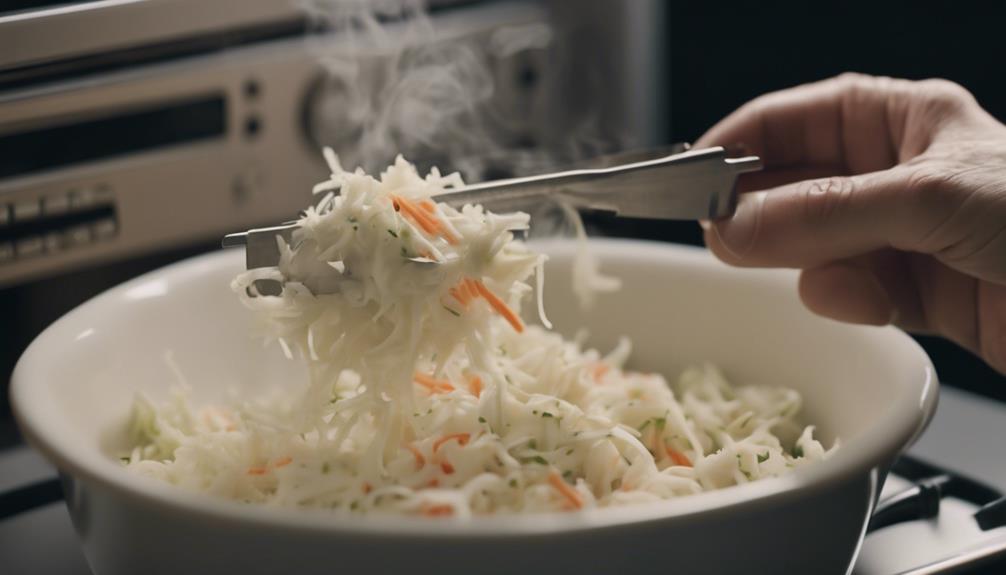
To ensure safe and efficient microwaving of coleslaw, it is imperative to utilize microwave-safe containers such as ceramics, glass dishes, or designated plastics. These containers are designed to withstand the heat generated in the microwave, reducing the risk of melting or leaching harmful chemicals into the food.
Additionally, when microwaving coleslaw, it is crucial to pay attention to heating times. Overheating can lead to the vegetables becoming overly soft and losing their desired texture.
Serving Suggestions for Microwaved Coleslaw
For an elevated dining experience, consider complementing your microwaved coleslaw with a variety of flavorful and creative serving suggestions.
- Pairing: Serve microwaved coleslaw as a refreshing side dish alongside rich dishes like barbecue for a balanced meal.
- Customization: Customize the microwaved coleslaw by experimenting with different dressings to suit your taste preferences.
- Enhancements: Elevate the flavor and texture by adding fruits or nuts to the coleslaw, giving it a unique twist.
Frequently Asked Questions
Can You Freeze Coleslaw After Microwaving It?
Freezing coleslaw after microwaving can impact its texture, potentially affecting the crunchiness and overall taste. To preserve quality, consider freezing coleslaw without mayonnaise. Reheating frozen coleslaw may result in changes in consistency and flavor.
How Long Can Microwaved Coleslaw Be Stored in the Refrigerator?
When considering the storage of microwaved coleslaw in the refrigerator, it is advisable to adhere to proper food safety guidelines to maintain quality. Reheating methods and taste preferences should also be considered for enjoying the dish.
Can You Add Additional Ingredients to Coleslaw Before Microwaving?
Enhancing coleslaw before microwaving by adding complementary ingredients elevates flavor combinations and optimizes ingredient ratios. This step not only ensures the flavor permeates the dish evenly but also maintains the desired texture and crunchiness.
Is It Safe to Microwave Coleslaw in a Plastic Container?
When considering microwave safety and plastic containers for reheating coleslaw, it is crucial to verify the container's microwave-safe label to prevent potential hazards. Selecting appropriate containers can help maintain the coleslaw's texture and ensure safe reheating techniques are applied.
Can You Adjust the Seasoning of Coleslaw After Microwaving It?
Adjusting the seasoning of coleslaw post-microwaving is a simple and effective way to tailor the dish to your taste preferences. Enhance flavors by gradually incorporating salt, sugar, vinegar, or other desired seasonings, ensuring a customized and delicious outcome.
Conclusion
In conclusion, microwaving coleslaw offers a quick and efficient way to prepare this classic dish while retaining its crunchiness and enhancing its flavor. By following the steps outlined and considering factors affecting texture, you can enjoy a delicious coleslaw in no time.
Remember to follow safety precautions and consider serving suggestions to elevate your microwaved coleslaw experience. Just like a well-prepared dish, microwaving coleslaw can be a time-saving gem in your culinary repertoire.

